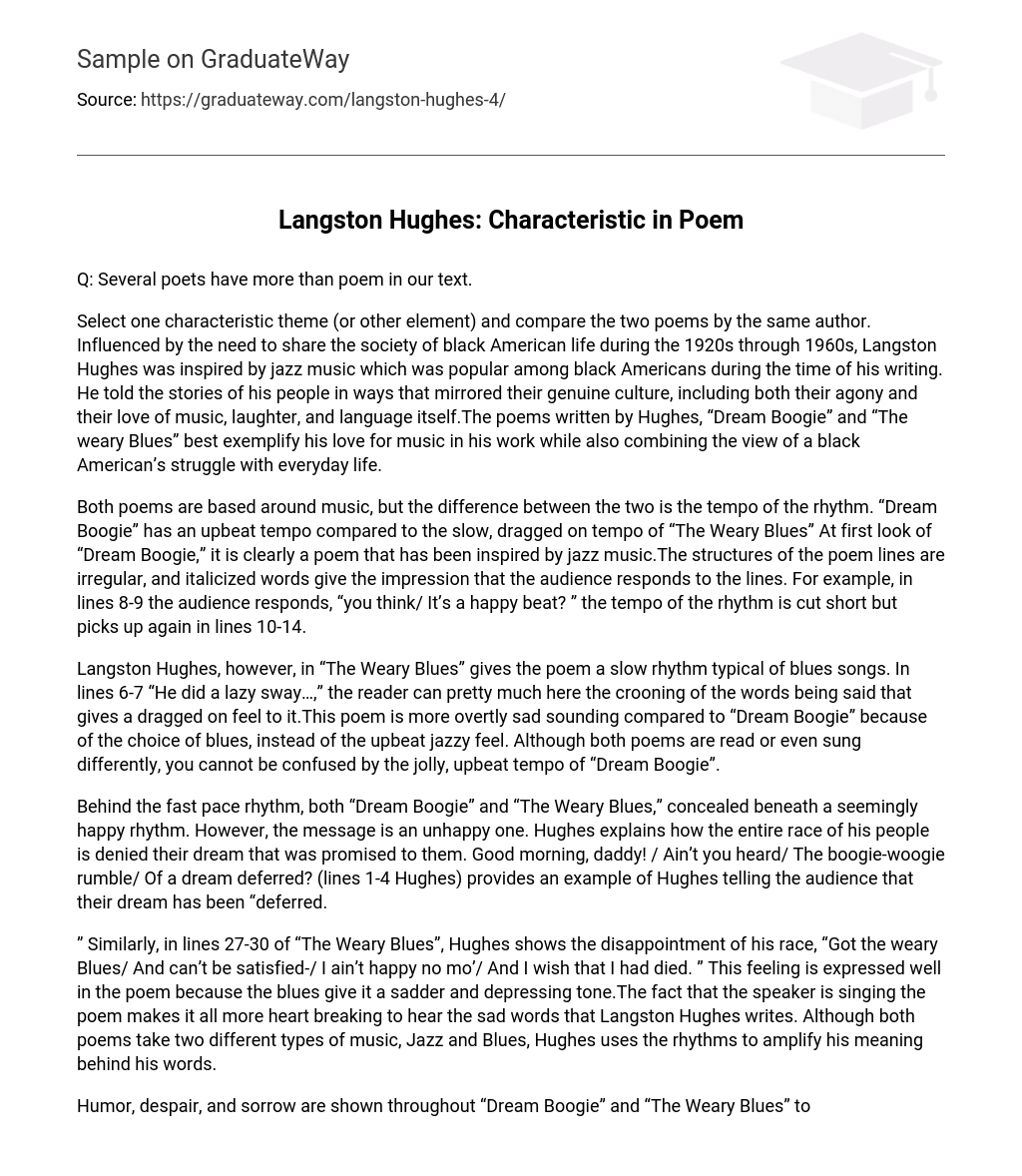Question: In our text, multiple poets have more than one poem.
During the 1920s through 1960s, Langston Hughes was influenced by the desire to portray black American life. He found inspiration in jazz music, which was particularly popular among black Americans at that time. In his poems, Hughes effectively captured the true essence of his people’s culture. He depicted their experiences of both pain and pleasure, as well as their deep connection with music, laughter, and language. Two examples of Hughes’ work that showcase his love for music and also shed light on the hardships faced by black Americans in their everyday lives are “Dream Boogie” and “The weary Blues.”
Both poems revolve around music but differ in terms of rhythm tempo. “Dream Boogie” features an upbeat tempo in contrast to the slow and drawn-out tempo of “The Weary Blues”. Upon first glance, “Dream Boogie” clearly draws inspiration from jazz music, with its irregularly structured poem lines and italicized words that capture the audience’s responsive reactions. For instance, lines 8-9 elicit an audience response, asking, “you think/ It’s a happy beat?”. The tempo of the rhythm is momentarily interrupted but swiftly resumes in lines 10-14.
Langston Hughes, in “The Weary Blues,” gives the poem a slow rhythm characteristic of blues songs. In lines 6-7, “He did a lazy sway…,” the reader can practically hear the crooning of the words, creating a drawn-out sensation. This poem is distinctly melancholic in contrast to “Dream Boogie” due to the use of blues instead of the lively jazz ambiance. Although both poems are recited or even sung in varying manners, there is no mistaking the cheerful and lively tempo of “Dream Boogie.”
In both “Dream Boogie” and “The Weary Blues,” the fast pace rhythm masks an underlying unhappy message. Hughes reveals that his people have been denied the dream that was promised to them. One example of this is found in the lines: “Good morning, daddy! / Ain’t you heard/ The boogie-woogie rumble/ Of a dream deferred?” (Hughes). Here, Hughes suggests that their dream has been postponed or delayed.
Similarly, in lines 27-30 of “The Weary Blues”, Langston Hughes expresses the disappointment of his race: “Got the weary Blues/ And can’t be satisfied-/ I ain’t happy no mo’/ And I wish that I had died.” This sentiment is effectively conveyed in the poem through the melancholic and disheartening tone created by the blues. The fact that the speaker sings the poem adds to the heartbreak of experiencing the sorrowful words written by Hughes. Although Jazz and Blues are two different genres of music, Hughes utilizes their rhythms to enhance the underlying meaning behind his words.
The poems “Dream Boogie” and “The Weary Blues” effectively showcase the emotions of humor, despair, and sorrow in order to depict the experiences of the author’s people. These works authentically represent their cultural background, encompassing both their hardships and moments of joy. Langston Hughes utilizes his unique style to capture the rhythmic qualities and musicality of jazz and blues, which are prevalent themes in both poems.





